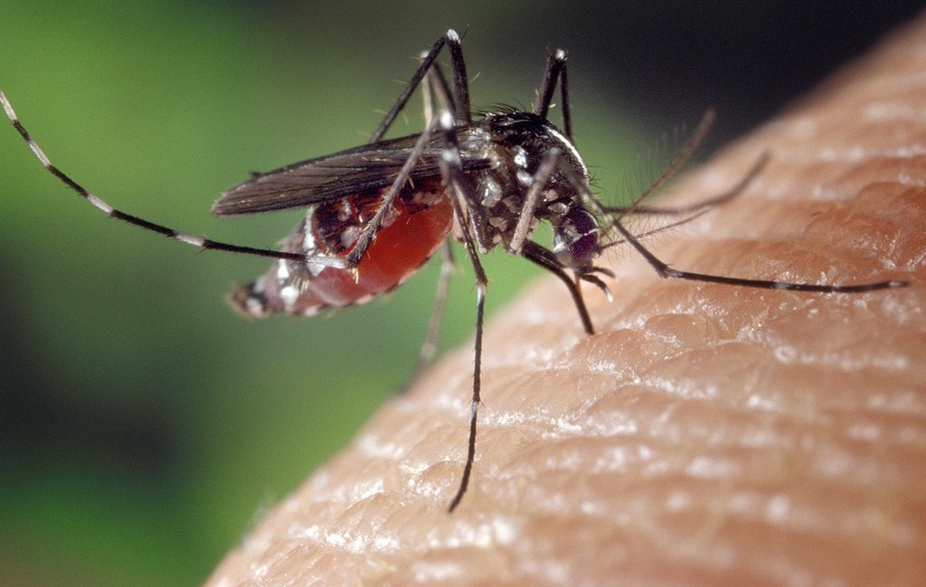Seleção de cepas de Bacillus thuringensis Berliner para o controle de Aedes aegypti Linnaeus
DOI:
https://doi.org/10.20873/jbb.uft.cemaf.v4n1.meloPalabras clave:
vector control, bioassay, endotoxin, SDS-PAGEResumen
The present study aimed to select strains of Bacillus thuringiensis with insecticidal activity against Aedes aegypti. It was tested sixteen strains of bacteria, isolated from Paraná state, Brazil, that were used in laboratory assays with mosquito larvae. Tests were carried out in two stages, first one to select the most efficient strains (screening) and second to estimate LC50. The protein profile of the highest toxicity of strain was obtained by SDS-PAGE (sodium dodecyl sulfate polyacrylamide gel electrophoresis). The best performance of larval mortality was produced by BR-01 strain, which 96.7% mortality rate, significantly higher than others. In the second part, there was obtained a LC50 of 9.07 µL.L-1 fermented extract. The protein profile revealed many peptides between 15 and 140kDa, similar to that reported in Bacillus thuringiensis ser. israelensis strains which high toxicity to mosquito species.
Citas
ABBOTT WS. A method of computing the effectiveness of an insecticide. Journal of Economic Entomology, v.18, n. 2, p.265-267, 1925
BARRETO ML, TEIXEIRA MG. Dengue no Brasil: situação epidemiológica e contribuições para uma agenda de pesquisa. Revista Estudos Avançados, v. 22, n. 64, p. 53-72, 2008.
BENINTENDE G, LÓPEZ-MEZA J, COZZI J, IBARRA J. Novel nontoxic isolates of Bacillus thuringiensis. Letters in Applied Microbiology, v. 29, n. 3, p. 151-5, 1999.
BRAVO A, GILL SS, SOBERON M. Mode of action of Bacillus thuringiensis toxins and their potential for insect control. Toxicon, v. 49, n. 4, p. 423-435, 2007.
BRAVO A, LIKITVIVATANAVONG S, GILL S & SOBERÓN M. Bacillus thuringiensis: a story of a successful bioinsecticide. Insect Biochemistry and Molecular Biology, v. 41, n. 7, p. 423-431, 2011.
CONSOLI RAGB, LOURENÇO-DE-OLIVEIRA R. Principais mosquitos de importância sanitária no Brasil. Editora Fiocruz, Rio de Janeiro, RJ, p. 228, 1994.
FEDERICI BA, PARK HW, BIDESHI DK. Overview of the Basic Biology of Bacillus thuringiensis with Emphasis on Genetic Engineering of Bacterial Larvicides for Mosquito Control. Open Toxinology Journal, v.3, p. 83- 100, 2010.
LAEMMLI UK. Cleavage of structural proteins during the assembly of the head of bacteriophage T4. Nature, London. v. 227, n. 5259, p. 680-685, 1970.
GUERCHICOFF A, DELECLUSE A, RUBINSTEIN C P. The Bacillus thuringiensis cyt genes for hemolytic endotoxins constitute a gene family. Applied and Environmental Microbiology, v. 67, n. 3, p. 1090–1096, 2001.
MELO ALA, SANCHUKI CE, WOICIECHOWSKI AL, THOMAZ-SOCCOL V, SOCCOL CR. Utilização da cama de frango em meio de cultivo de Bacillus thuringiensis var. israelensis Berliner para o controle de Aedes aegypti Linnaeus. Journal of Biotechnology and Biodiversity, v. 2, n. 4, p. 1-6, 2011.
RABINOVITCH L, CAVADOS CFC, LIMA MM. Dos Bacillus entomopatogênicos, o que se espera? Biotecnologia, Ciência e Desenvolvimento, v. 6, n. 6, p. 40-41, 1998.
ROH JY, PARK HW, JIN BR, KIM HS, YU YM, KANG SK. Characterization of novel non-toxic Bacillus thuringiensis isolated from Korea. Letters in Applied Microbiology, v. 23, n. 4, p. 249-252, 1996.
SAMBROOK J, FRITSCH EF, MANIATIS T. Molecular Cloning: A Laboratory Manual, 2nd ed., Cold Spring Harbor Laboratory Press. New York, p. 1626, 1989.
USEPA. Trimmed spearman-karber (TSK) program version 1.5 ecological monitoring research division. Environmental Monitoring Systems Laboratory, USEPA, Cincinnati, OH, 1990.
WHO. Guidelines for laboratory and field testing of mosquito larvicides. (Document WHO/CDS/WHOPES/GCDPP/13, Geneva, Switzerland, World Health Organization), 2005.

Publicado
Cómo citar
Número
Sección
Licencia
Copyright (c) 2024 - Journal of Biotechnology and Biodiversity

Esta obra está bajo una Licencia Creative Commons Atribución 4.0 Internacional.
Los autores que publican en esta revista aceptan los siguientes términos:
Los autores mantienen los derechos autorales y conceden a la revista el derecho de primera publicación, con el trabajo simultáneamente licenciado bajo la LicenciaCreative Commons Attribution (CC BY 4.0 en el link http://creativecommons.org/licenses/by/4.0/) que permite compartir el trabajo con reconocimiento de la autoría y publicación inicial en esta revista.
Los autores tienen autorización para asumir contratos adicionales separadamente, para distribución no exclusiva de la versión del trabajo publicado en esta revista (ej.: publicar en repositorio institucional o como capítulo de libro), con reconocimiento de autoría y publicación inicial en esta revista.
A los autores se les permite, y son estimulados, a publicar y distribuir su trabajo online (ej.: en repositorios institucionales o en su página personal) en cualquier punto antes o durante el proceso editorial, ya que esto puede generar alteraciones productivas, bien como aumentar el impacto y la citación del trabajo publicado (disponible en El Efecto del Acceso Libre en el link http://opcit.eprints.org/oacitation-biblio.html).


